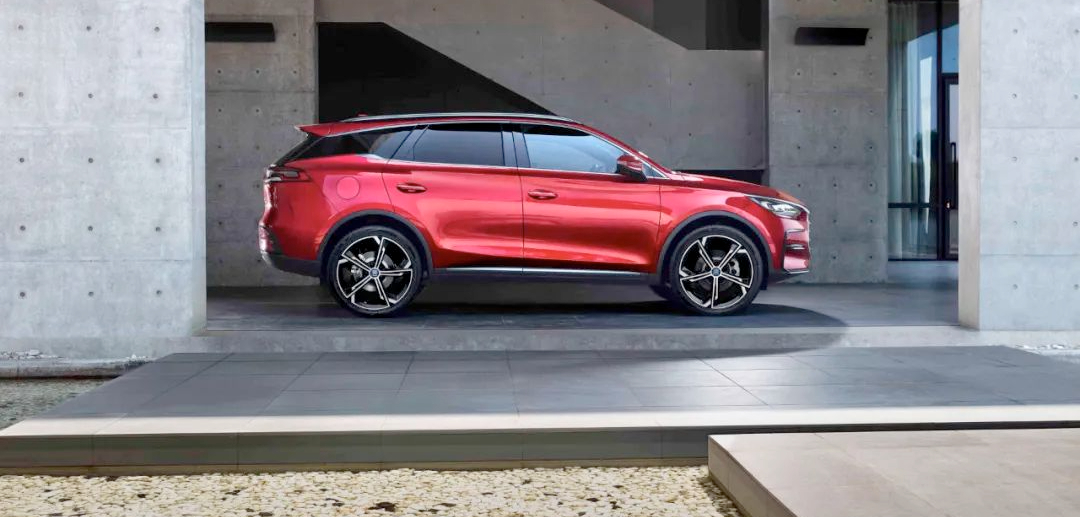Author: Nange
After BYD broke through the last barrier of brand aura, perhaps it is the real “wolf is coming” for joint venture brands.
According to statistics, as of the end of September this year, the total number of motor vehicles in China has reached 315 million, after nearly 10 years of rapid development, China’s auto market has changed from a nearly crazy incremental market to a stock market. Normally, the pattern of major auto companies has been basically finalized in this situation, but there is such a brand that just doesn’t like to “play by the rules”, and it is BYD.
This year, how strong BYD is in the new car market, I am sure I don’t need to go into details. As the first traditional automaker in China to fully transform into new energy vehicles, BYD sold more than 200,000 new cars in September, and the sales of the top 5 new energy vehicle companies, Tesla, Wuling, Geely, and GAC Aion, are not as high as BYD’s. But there is one thing that you may be curious about, how did BYD achieve its strong rise in the overall new car sales in China, and which surviving space did it squeeze out from the original car models?
Now let’s analyze the rise of various BYD models from different segmentation levels of the market.
A0-level Entry Market
As the “goalkeeper” of the traditional sedan market, the A0-level market has been relatively stable, even dull, in the past few years. Honda Fit, Toyota Yaris, Volkswagen Polo, and Hyundai Verna have always firmly controlled this market below ¥100,000 with the help of joint venture aura and low prices…until the appearance of BYD Dolphin.
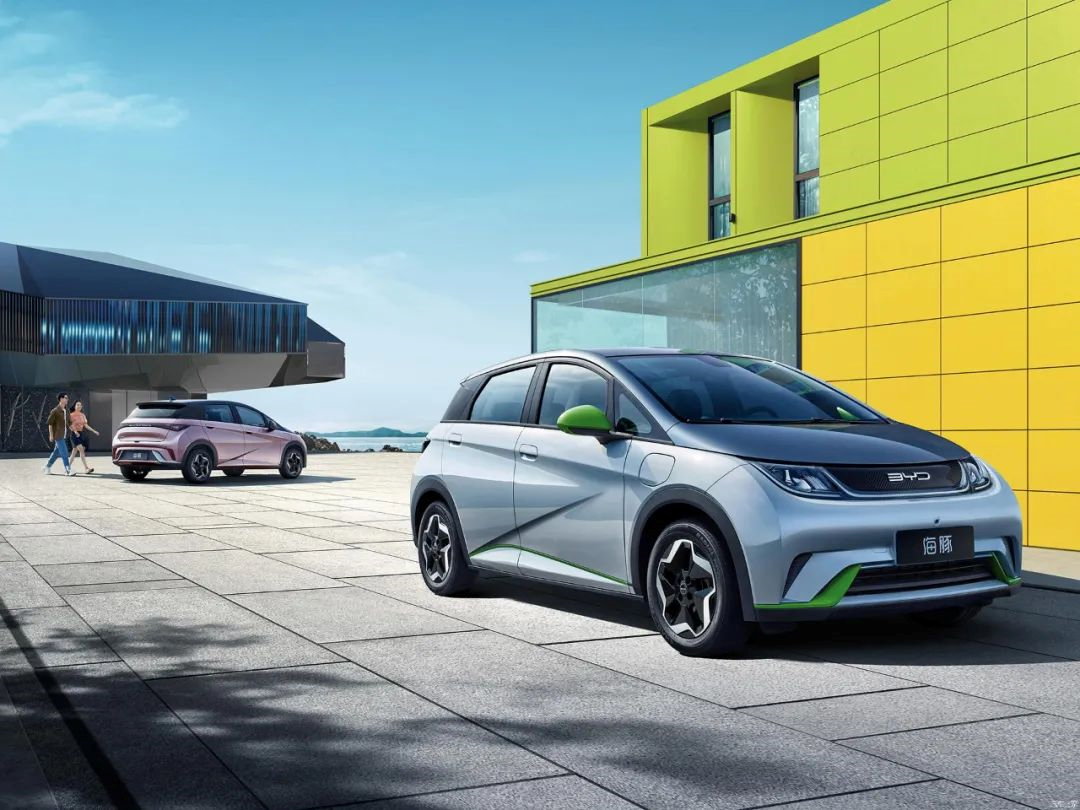 In August last year, the BYD Dolphin was officially launched. To be honest, its price ranges from 102,800 to 130,800 yuan, which is not cheap for its A0 positioning. It is worth noting that the Fit, a car with a reputation for strong pricing, only costs 106,800 yuan for the top model. However, the Dolphin became a hit immediately after its launch, and successfully stirred up the entire A0 sedan market. In September, the Dolphin’s sales reached 24,855 units, surpassing its competitors, including the Toyota Yaris L, Honda Fit, Ora R1, and Toyota Vios.
In August last year, the BYD Dolphin was officially launched. To be honest, its price ranges from 102,800 to 130,800 yuan, which is not cheap for its A0 positioning. It is worth noting that the Fit, a car with a reputation for strong pricing, only costs 106,800 yuan for the top model. However, the Dolphin became a hit immediately after its launch, and successfully stirred up the entire A0 sedan market. In September, the Dolphin’s sales reached 24,855 units, surpassing its competitors, including the Toyota Yaris L, Honda Fit, Ora R1, and Toyota Vios.
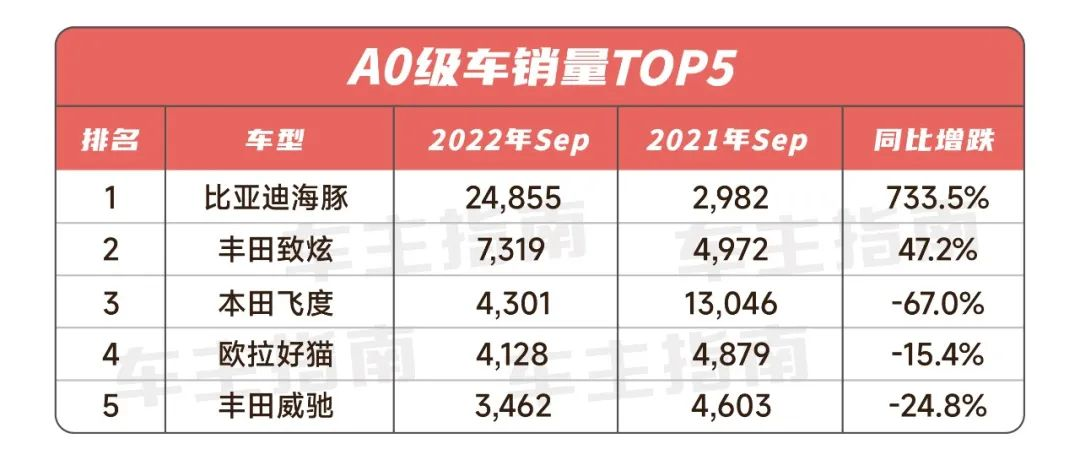
Many joint venture models that used to dominate this segment are showing obvious decline this year. For example, the Fit experienced a YoY drop of 67% last September. Volkswagen Polo and Hyundai Verna, which were not popular models to begin with, have seen a cumulative sales decline of 60% -80% from January to September. Besides, the Dolphin’s strong product performance and the significant transformation of BYD’s brand image mean that even in the relatively low-end market, people are starting to choose domestic brands rather than blindly favoring joint venture brands.
Mainstream A-class Sedan Market
The price range of 100,000-150,000 yuan has always been the main price range for family cars. After the BYD Qin was equipped with DM-i hybrid technology, its competitiveness was greatly improved. In September, the Qin for the first time in history was ranked first in the compact sedan sales ranking, surpassing its former competitor, the Nissan Sylphy, with sales of 37,415 units.
Like A0-level market, except for the Nissan Sylphy, the market share of other models such as the Volkswagen Lavida, Bora, Sagitar, and Toyota Corolla, Levin have all been severely eroded by the BYD Qin. According to sales figures from January to September, Lavida, Bora, and Sagitar respectively saw a fall of 20%, 19.2%, and 4.9%, while the sales of Corolla and Levin dropped by as much as 25.6% and 21.9% respectively.
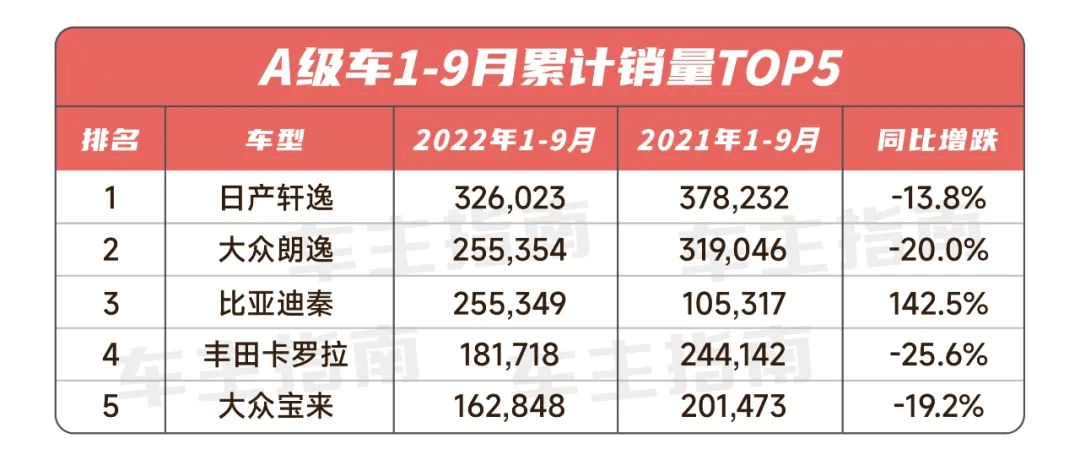
After all, compared with the same period last year, BYD Qin’s sales have increased by up to 150,000 vehicles, which means that there are 150,000 real consumers who were attracted from those well-establish joint-venture car models to buy BYD Qin. However, unlike the Dolphin in the A0-level market, although BYD Qin has gained a foothold, it cannot be complacent. Nevertheless, it is clear that many joint-venture competitors have felt unprecedented pressure this year, and many brands have implemented unprecedented discount strategies, which is undoubtedly good news for consumers.
The high-end B-class car market
Once upon a time, the car market with a price tag over RMB200,000 became a “forbidden zone” for Chinese brands, but BYD did not care about that. As a model whose size almost matches that of a medium-sized car, BYD Han delivered a sales performance of 31,336 vehicles in September. This number not only surpassed the mainstream joint-venture B-class car models such as Toyota Camry, Honda Accord, Volkswagen Passat, and Magotan but also is outstanding in the entire car market.
It is worth mentioning that, unlike BYD Qin or Dolphin that compete for the same level of joint venture fuel models, Han’s main sales are more based on the high-end product image and differentiated competition, to compete head-on with Model 3 and the luxury brand intermediate cars in higher price ranges. This also allows those old joint venture mid-size cars, which have relatively large mass bases, to maintain relatively stable market performance.
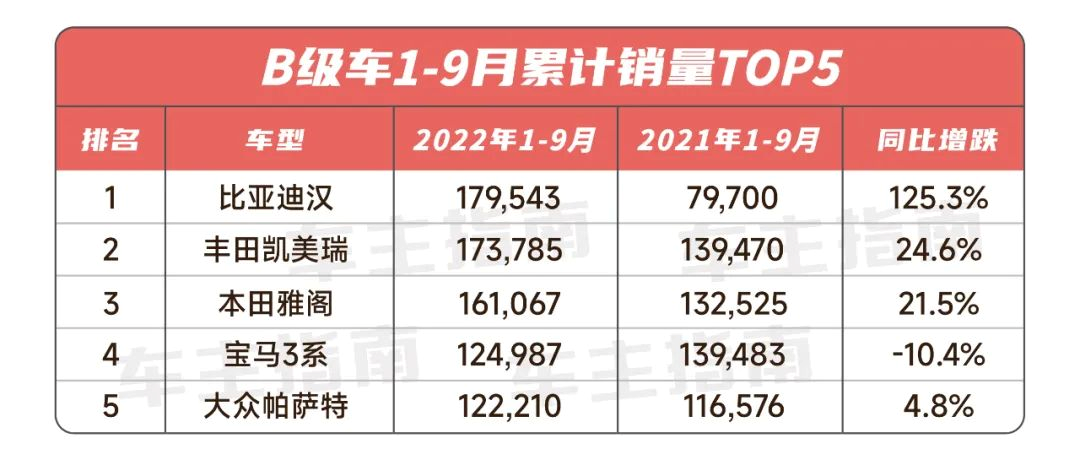
The Model 3, which directly competes with Han in terms of price, sold 99,039 units from January to September this year, which not only showed a 11.4% decline compared to the same period last year, but also has been surpassed by 80,000 units by Han. Perhaps feeling the pressure from BYD, Tesla also recently released a big price-cutting strategy, with prices of all models significantly reduced, and the starting price of Model 3 lowered to 265,900 yuan. However, even so, it may not be easy to re-gain this market.
SUV Market Dominance
Moving on to the more popular SUV market, the competitive situation between Haval H6 and Changan CS75 is not coming back. The two once-dominant independent SUVs have both shown obvious decline this year, with sales down by 70,326 units and 53,786 units compared to the same period last year, respectively. In addition to these two domestic models, Toyota RAV4 also saw a significant decline in sales, which decreased by 26,329 units.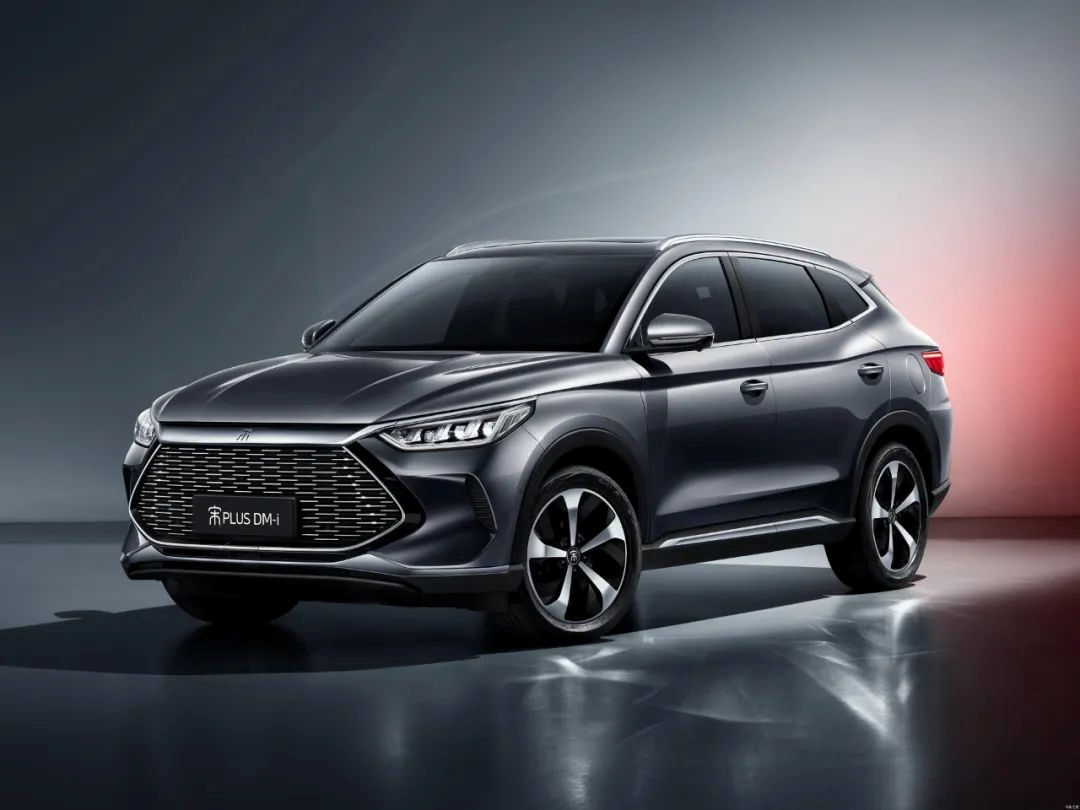
If you add up the sales of the three “brothers-in-arms” that have been lost, you will be surprised to find that the number (about 150,000 vehicles) is very close to the additional sales of BYD Song this year. Yes, the numbers don’t lie, and the rise of BYD Song has had a significant impact on Toyota, Great Wall, and Changan in the SUV market.

In addition to the Song, which is killing the competition, the lower-positioned and pure electric vehicle-only Yuan PLUS is also a big black horse for BYD this year. It was only launched in February, and even with one month less sales compared to its competitors, its cumulative sales have exceeded 100,000 vehicles this year. Evergreen trees such as the Tiguan and Vezel can only be ranked behind it.
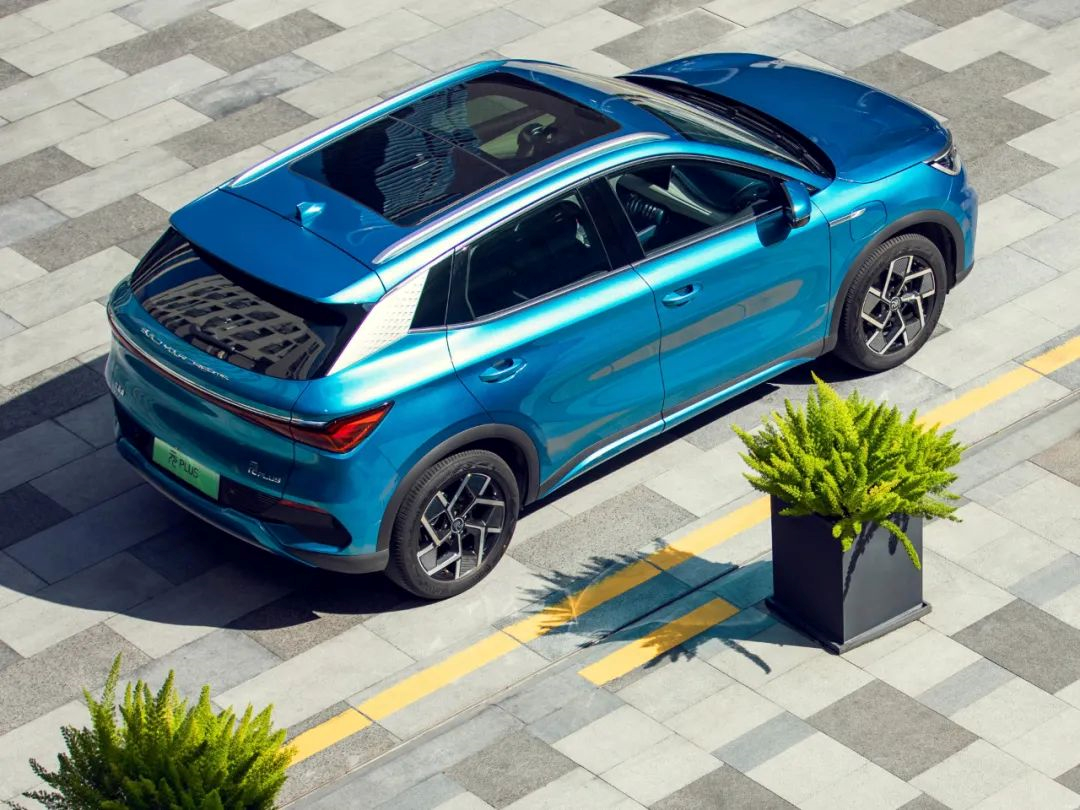
As for the BYD Tang, which has a starting price of over 200,000 yuan, its cumulative sales have also reached 91,901 vehicles. The stable performance of these three hot-selling models has firmly occupied BYD in every level of the SUV market.
Consumers vote with their wallets.Apart from the superficial data of sales, there are some deeper insights that I’d like to share with you. Recently, a car data platform released the average wholesale price data of car manufacturers in September. BYD ranked second among traditional non-luxury brands with an average transaction price of 166,000 yuan per vehicle. This number has surpassed the joint venture automakers such as “North-South Volkswagen” and Toyota, which are known for their strong pricing. If it weren’t for SAIC-GM Buick’s high-priced and high-selling GL8 model, BYD might have become the non-luxury brand with the highest transaction price.
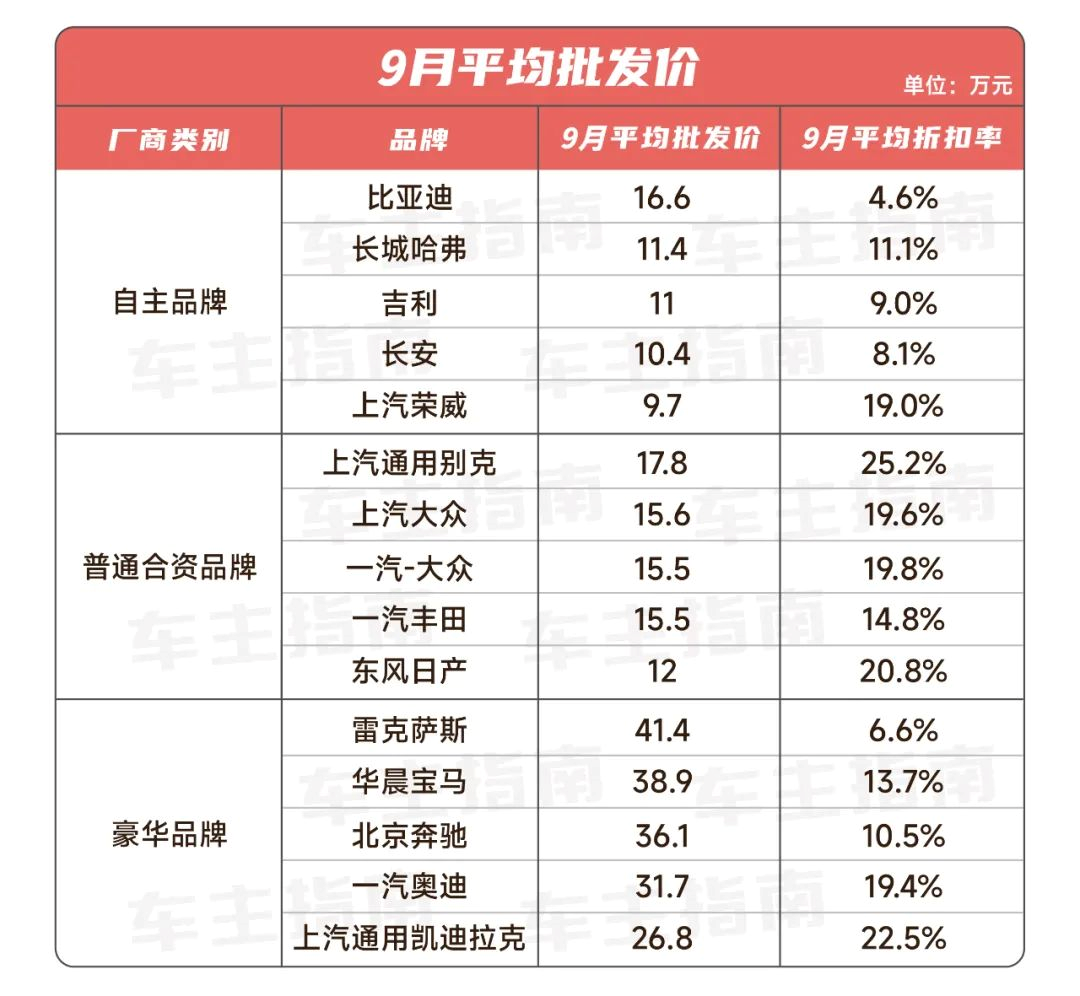
However, don’t misunderstand, the increase in the average unit price does not mean that BYD’s cars are being sold at a higher price, but rather that BYD is able to sell more expensive cars. Simply put, consumers in the market have admitted BYD’s brand positioning and this also means that the self-owned brand’s car-making technology represented by BYD has been widely recognized by consumers. BYD has ensured its ability to continue to provide consumers with cost-effective products while also achieving its brand elevation goal.
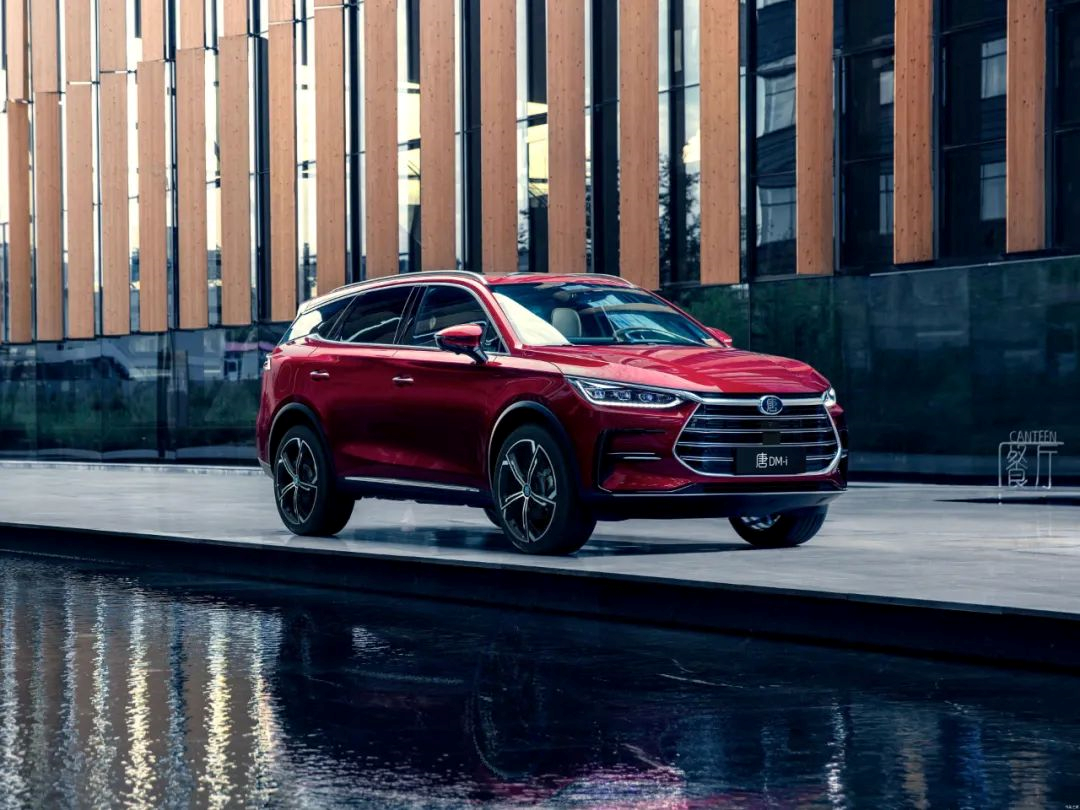
When the final barrier of brand aura has been successfully surpassed by BYD, it may be the real “wolf coming” for joint venture brands. But we don’t have to feel sorry for them, after all, a large chunk of this global market belongs to Chinese brands!
This article is a translation by ChatGPT of a Chinese report from 42HOW. If you have any questions about it, please email bd@42how.com.
